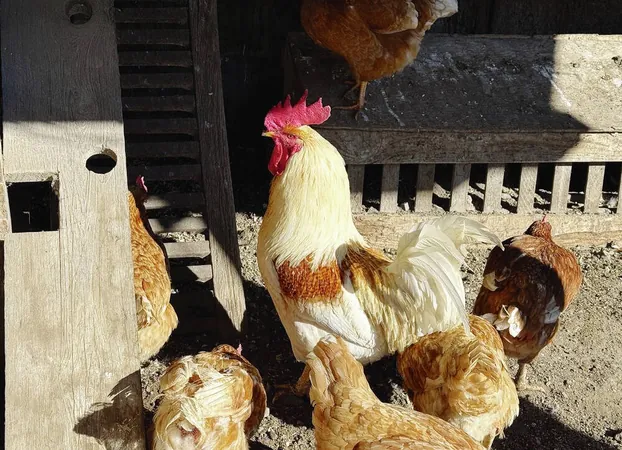
Scientists Create the World’s Thinnest Pasta: A Groundbreaking Discovery with Medical Applications!
2024-11-29
Author: Olivia
In an astonishing breakthrough, researchers have recently developed a type of pasta that is about 1,000 times thinner than the famously delicate Sardinian pasta known as su filindeu, which translates to "threads of God." Traditionally, su filindeu, measuring a mere 0.016 inches wide (or 400 microns), has held the title for the thinnest pasta in the world. However, University College London (UCL) graduate chemistry student Beatrice Britton has now invented a "nanopasta" that measures just 15 millionths of an inch thick (372 nanometers), making it thinner than some wavelengths of light.
While the prospect of this nanopasta gracing restaurant menus remains unlikely—since it would overcook in a matter of seconds—its implications for the medical field are profound. The findings were published in the scientific journal *Nanoscale Advances*, highlighting how these ultra-thin fibers could revolutionize applications such as bandages, scaffolding for bone regeneration, tissue regrowth, and even drug delivery systems.
Adam Clancy, a researcher at UCL, described the process behind this revolutionary creation. “To make spaghetti, you typically push a mixture of water and flour through a device,” he explained. “In our experiments, we employed an electrical charge to pull the flour mixture through a fine tip—essentially making spaghetti, just on a much smaller scale.”
The pivotal ingredient for these groundbreaking nanofibers is starch, which is produced by most green plants to store glucose. Although extracting and processing starch can be energy-intensive and water-consuming, the researchers assert that using common starch-rich ingredients like flour offers a more sustainable approach.
“Starch is abundant, renewable, and biodegradable, representing the second largest source of biomass on Earth after cellulose,” Clancy added. “Our method reduces the complexity involved in purifying starch, presenting a simpler and environmentally friendly avenue for producing useful nanofibers.”
Employing a technique known as electrospinning, the team managed to create these minuscule fibers. In this method, an electrical charge pulls a flour and liquid mixture through a needle tip onto a metal plate, forming fibers so fine that they were invisible to standard microscopes. The researchers used a scanning electron microscope—capable of taking images at a nanoscale—to observe their creation, which was then formed into a mat measuring 0.79 inches wide (2 centimeters) that can be seen with the naked eye.
Looking ahead, Clancy stated, “Our next steps involve assessing the properties of this new product. We need to understand how quickly it disintegrates, how it interacts with cells, and whether it can be manufactured at a larger scale.”
This pioneering research not only challenges our perception of pasta but also illustrates the vast potential pasta can have beyond the plate. With Italians long believing in the heart-healthy benefits of pasta, this discovery reinforces how this beloved food can bridge cultural gastronomy with advanced medical technology. Stay tuned, as this cutting-edge find could change the way we think about materials in medicine!









 Brasil (PT)
Brasil (PT)
 Canada (EN)
Canada (EN)
 Chile (ES)
Chile (ES)
 España (ES)
España (ES)
 France (FR)
France (FR)
 Hong Kong (EN)
Hong Kong (EN)
 Italia (IT)
Italia (IT)
 日本 (JA)
日本 (JA)
 Magyarország (HU)
Magyarország (HU)
 Norge (NO)
Norge (NO)
 Polska (PL)
Polska (PL)
 Schweiz (DE)
Schweiz (DE)
 Singapore (EN)
Singapore (EN)
 Sverige (SV)
Sverige (SV)
 Suomi (FI)
Suomi (FI)
 Türkiye (TR)
Türkiye (TR)